UPDATE IV: Nate was able to get this running. Check it out.
UPDATE III: See the internals of a Willys Light Plant here
UPDATE II: More pics of Nate’s Willys Light Plant here
UPDATE: There is more history about Miniger and his purchase of John North Willys Stock in 1929 in a 1946 Fortune article.
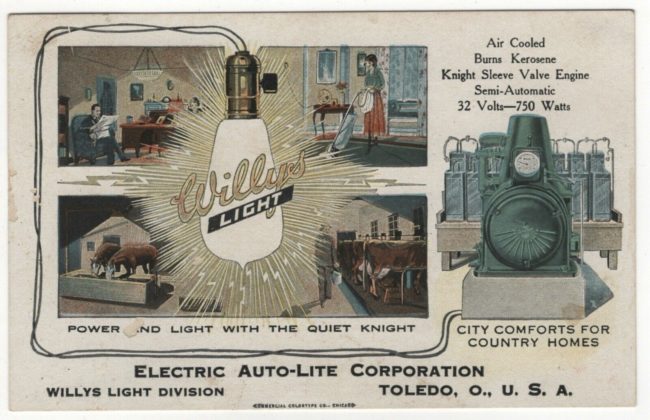
This postcard is currently listed on eBay.
The other day Nate forwarded me the following images of a Willys home power plant, built by both “Willys Light” and the “Electric Auto-Lite Corporation”. Not knowing much about any of this (and not having the time to source original info from newspapers of the time), I took a break from house painting to venture down internet rabbit holes. What follows is more of a work-in-progress than a finished piece. Hopefully, folks can add or correct the following.
Let’s start with the pics that Nate sent:
Now, stepping back a little in time … These days we in the US are generally pretty spoiled in terms of our access to 24/7 electricity. Of course, this wasn’t always the case. Because of my work on SLAG, I am aware that there was a revolution in mines and smelting with the introduction of power plants. My great great grandfather first introduced an electric plant into his smelter in Leadville in 1881 (followed shortly by electricity in the Salt Lake City’s Germania plant). By then, Broadway in NY was lit with a power plant, as were parts of major cities.
Such power plants would have been expensive, which is why large municipalities or successful businesses were utilizing them. But, such plants would have been outside the financial reach of the average folks. Still, there was an interest among home and farm owners to replace the gas and oil lamps used in homes.
As the twentieth century arrived, the automobile industry launched in earnest. Some of the early vehicles had head lamps, most(?) of which used gas lighting. One enterprising man named Clement Miniger, a pharmaceutical salesman, heard in 1911 about two men in Indiana trying out electric powered lamps for vehicles. He brought the two to Toledo to manufacture the lights, calling the product and the company Auto-liter. Another successful product the company created was the electric starter, which replaced the hand crake. It proved very popular.
In 1912, John Willys North bought the Overland Company and renamed it Willys-Overland Motor Company. In 1913, North acquired the Edwards Motor Company, the inventor of what would become the Knight “sleeve” engine, which allowed for a quieter engine. By 1915, Willys-Overland Motor Company became the second largest automaker in the US.
Still, this success didn’t protect Willys from the difficulties of a major strike and WWI. In 1918, Willys declared bankruptcy, prompting Miniger to buy back his auto-liter company. He renamed it the Electric Auto-Lite Corporation. However, despite Miniger taking back the company, he and Willys continued to do business. Apparently, they both realized that the Willys Knight sleeve engine would make a good, relatively quiet, power plant. Meanwhile, the Electric Auto-Lite Corporation had the electrical expertise to produce the electrical mechanics.
But, it took more than expertise to sell electric power plants; it took sales techniques. To that end, Willys-Overland developed a manual for selling “Light”. In fact, a 1921 article shared the importance of marketing and selling electrical power products:
By 1922, the joint endeavor was producing two power plant products, the Willys Light and the less powerful Willys Light Junior (as seen in Nate’s pics .. priced at $295). Here are ads for both:
A 1922 Willys Light manual (with the subtitle/slogan, “Power & Light with the Quiet Knight”) was recently auctioned. More details can be found at Worth Point:
One of the ways these plants were sold was through dealers. such as this ad by C.S. Bangs & Son out of Manchester, New Hampshire:
Here is another distributor:
Here are a couple more ads. This one below shows that Willys was advertising in the Country Gentleman magazine long before the jeep:
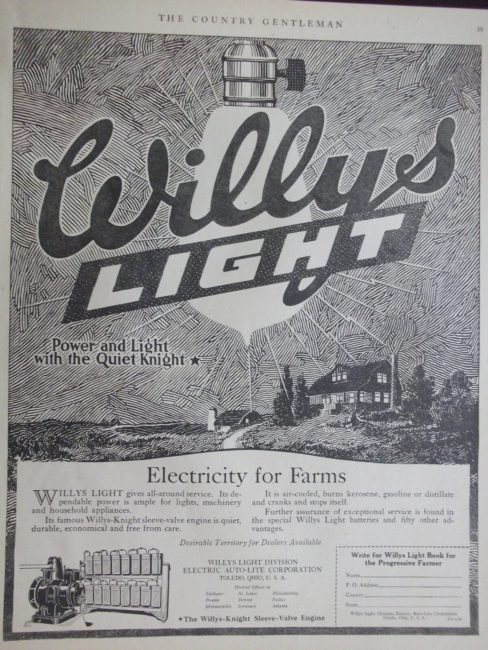
https://www.ebay.com/itm/154012287598?mkcid=1&mkrid=711-53200-19255-0&siteid=0&campid=5337051334&toolid=11800&mkevt=1
Unfortunately, I was unable to determine how many units were sold nor was there any evidence to indicate when sales of the power plants ceased, but given that Miniger lost control of his company during the Depression and Willys-Overland was reorganized also during the Depression, I suspect the Willys Light division ceased production of those power plant about that time.
Hopefully, that gives folks a little background in this topic. Let me know if you can add to this little discussed aspect of the Willys-Overland-Knight story.

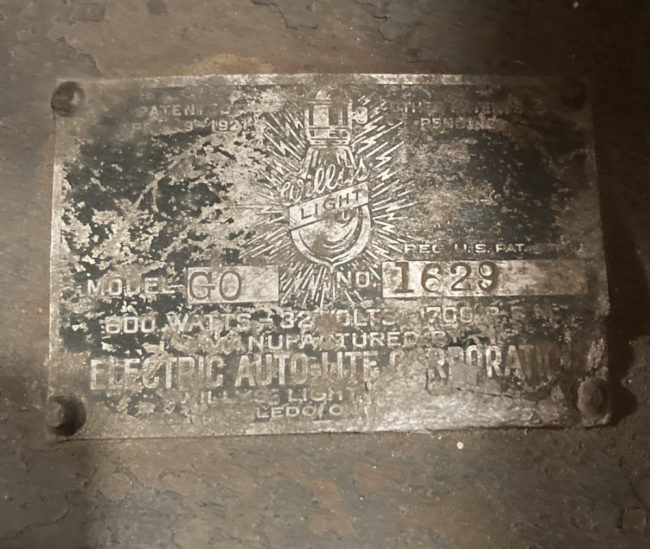
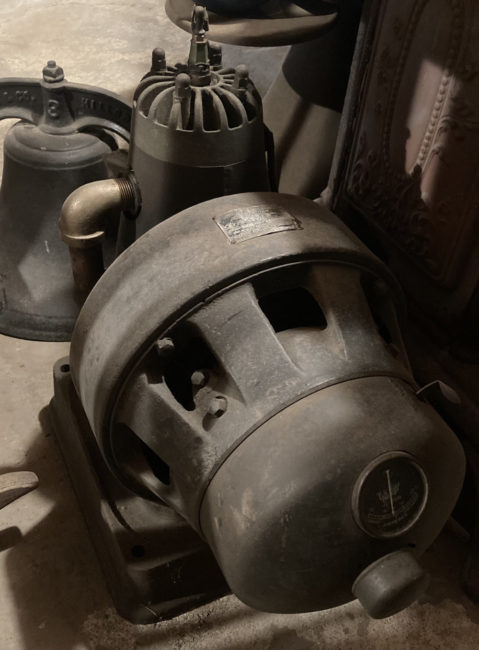
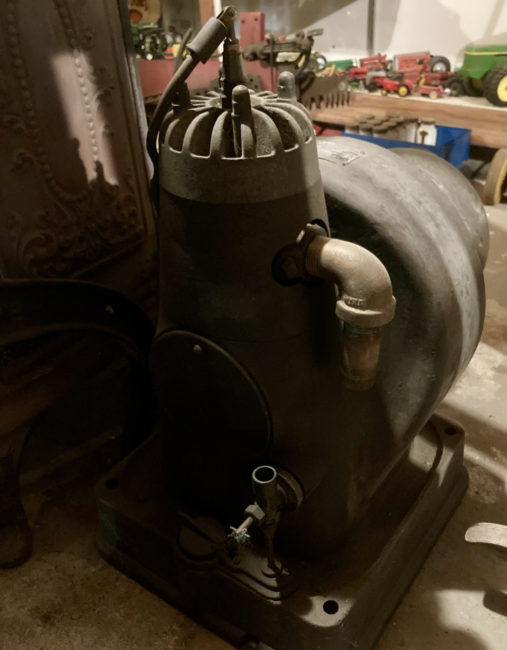
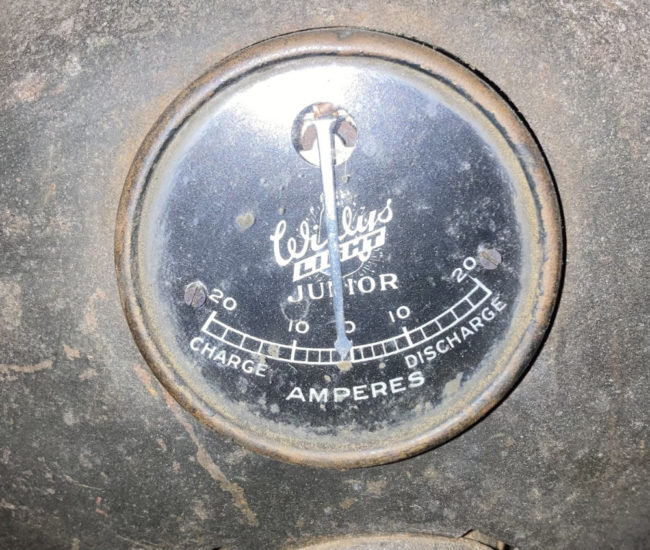
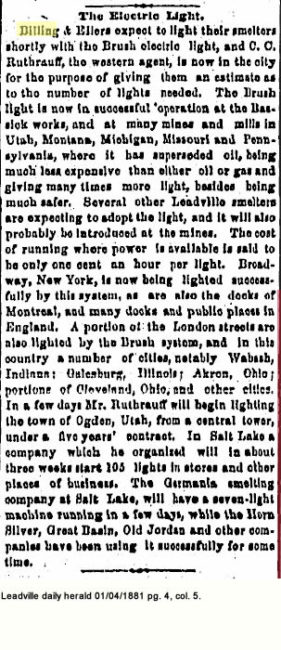

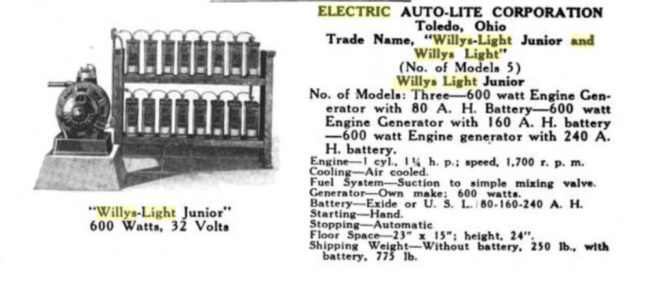
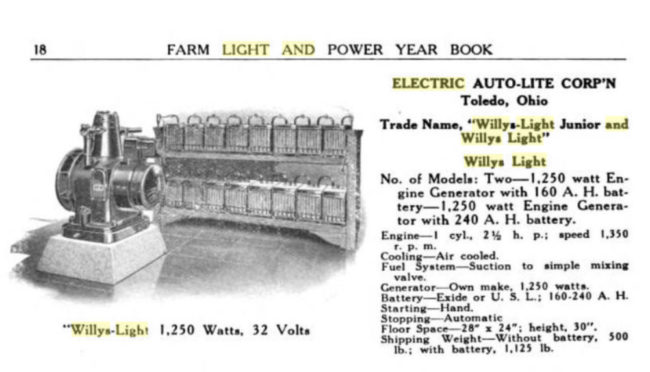
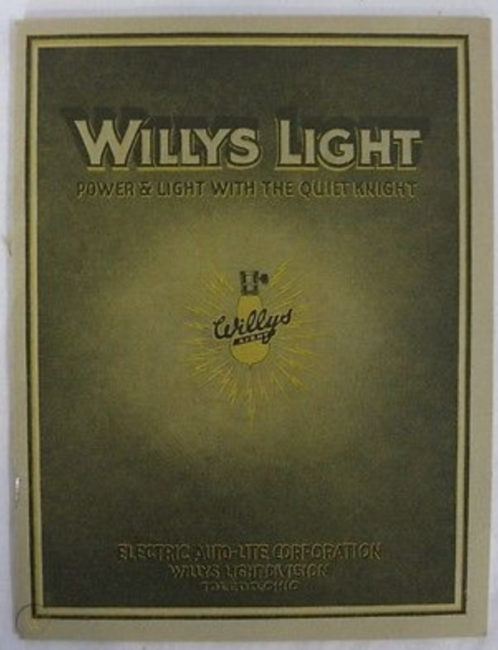
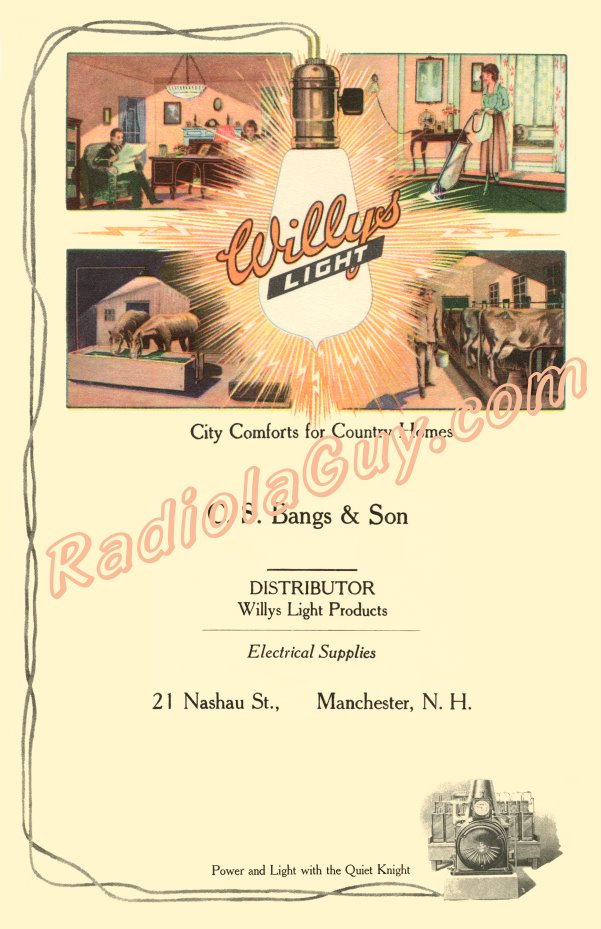
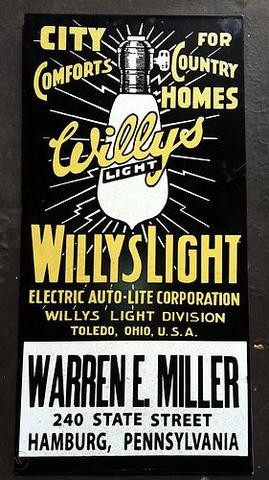
Dave, thanks for posting the link to the postcard. I just bought it and I will also be getting that light plant I sent you pictures of. Maybe I can do some more investigating on it when I get it.
I have one of these “Willys Light” vertical posters in my house. It’s from a dealer in Canton, Ohio.
Nate, any more history you can uncover would be great. I really just scratched the surface on this.
I think that the “selling” guide on Amazon would be interesting, but I would hate to spend $50 on it only to discover it had very little historical or pictoral value.
– Dave